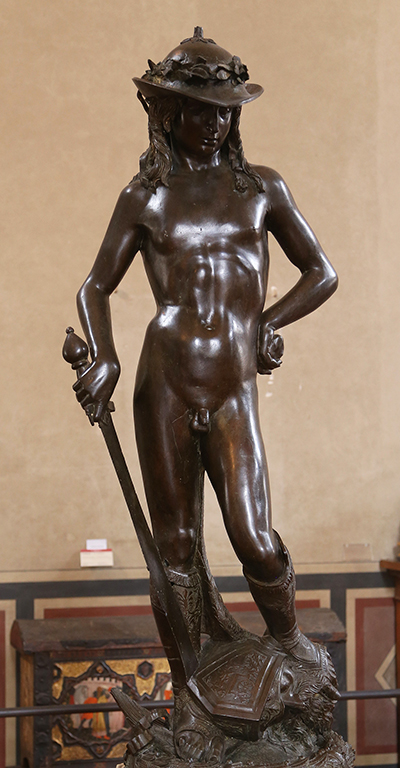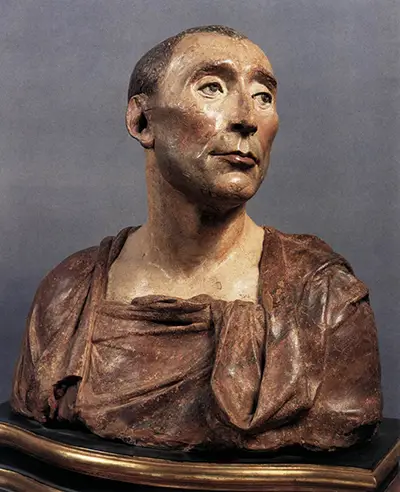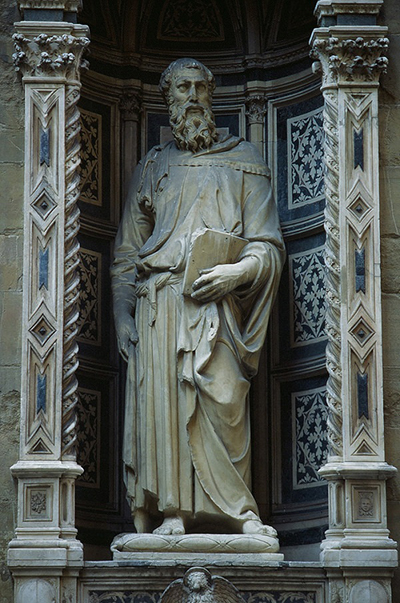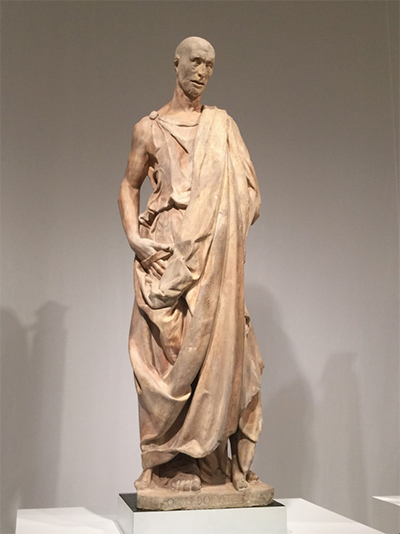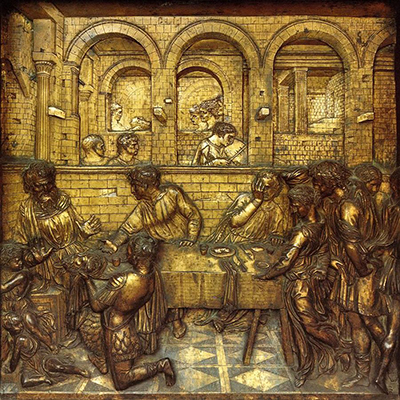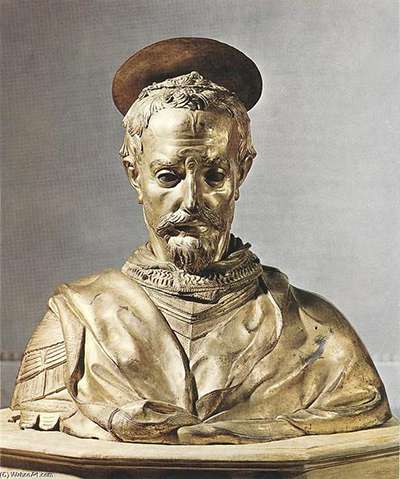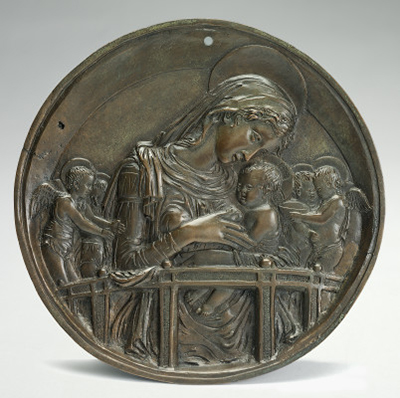Donatello's sculptures were constructed from techniques never seen before in order to make stone statues appear to speak.
The artist's full oeuvre, listed below, makes use of a wide variety of materials as this innovative artist experimented with different ideas and artistic methods in order to produce a broad range of impressive sculptures. David, shown on the left, was produced from bronze and an earlier, less famous version was produced in marble. Donatello's Penitent Magdalene was a wooden sculpture that was carefully planned in order to reduce the chances of any cracking. He may have been completely untrained in this medium but he quickly created his own techniques to solve the problems typically associated with this challenging sculpting material. He chose white poplar white for this piece, then finishing it with gesso (stucco). It is rare for an artist to produce a sculpture of this size in wood, but there was no lack of ambition in Donatello's outlook.
A further example of the sculptor's versatility is his bust of Niccolò da Uzzano which is made of terracotta clay. He then coloured the contours to complete the facial features and clothing. The head itself is angled in order to give a greater impression of realistic movement. There are darker lines used on the contours of the robes in order to provide further contrast. This summarises the artist's combination of classical styles with his own original innovations. For any individual to achieve so much success within their career whilst having an awkward, often aggressive personality can only mean that their prodigious natural talents gave them a license to be forgiven for continual bad behaviour. Whilst being a long way short of the wild antics of Caravaggio, there can be no doubt that Donatello consistently rubbed people up the wrong way, even many of the donors that were financing his career progression.
The influence of Donatello on Italian sculpture was so immense that pretty much anyone who followed would have consciously or unconsciously taken elements of his innovative career into their own. Two of the most famous of all, Michelangelo and Gian Lorenzo Bernini would surely have studied his work at some point in their careers and been impressed with the broad range of mediums that he used. Previous to Donatello, the most influential artists were the likes of Lorenzo Ghiberti (for whom Donatello worked for as a young apprentice), Filippo Brunelleschi and Giotto. Artist Giotto was famous for producing an early form of realism, where there was an intention to portray a scene at is was, rather than as it would like to be seen. In the modern day this will sound like a completely normal expectation, because of the variety of artistic styles that we now have, but at that time it was revolutionary, just as with other elements of his work. There has been clear evidence discovered that confirms Donatello's appreciation of Giotto's work through extended periods of study on his frescoes. Donatello may have been a sculptor himself, but there were many areas of cross over and learning.
The sculptor partnered up with Michelozzo on a wall tomb and several features of it would influence future artists from in and around Tuscany. He would also draw ideas and exchange ideas on artistic techniques with Brunelleschi. The Republic of Florence, it must be remembered, was at the centre of European art for several centuries, drawing some of the most skilled apprentices and willing donors to this region of the Papal States of Italy, as it was then known. The impact on Italian, and later European sculpture by some of Donatello's technical innovations would lead to new terms being coined within this medium. Schiacciato is perhaps the most famous of these, translating into English as flattened our or shallow relief. This method enabled him to bring a third dimension into his sculptures and would also contribute to the use of perspective within this genre more generally.
Repoussoir is a term that describes when artist uses items along the side of the composition in order to "frame" the scene. Examples of this include trees, as used by impressionists and also additional supporting figures within the Renaissance periods. Artists using this method included Paolo Veronese, Peter Paul Rubens, Jacob van Ruisdael plus also Donatello (yet again, one of the first).
Figura Serpentinata is another artistic term linked to the career of Donatello - with the Papal States being at the forefront of European art for several centuries, so many of these terms are from the Latin or Italian languages. Serpentine Figure, as it translates into English, involves placing key figures into a spiral pose, which tends to exaggerate their physical attributes and emotional expressions.
For the main facade of the campanile of Santa Maria del Fiore [Donatello] wrought in marble... [a status that is] now called il Zuccone. [It is] considered a very rare work and the most beautiful that [Donatello] ever made, such that whenever he wished to take an oath, to make others believe him he would say "By the faith that i have in my Zuccone". And while he was carving [the statue], he would gaze at it and exclaim "Speak, speak, or may the bloody dysentery take you."
Giorgio Vasari, Lives of the Artists, 1568



